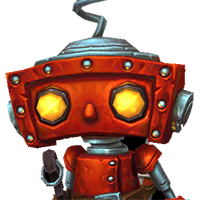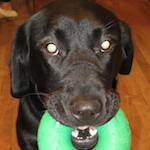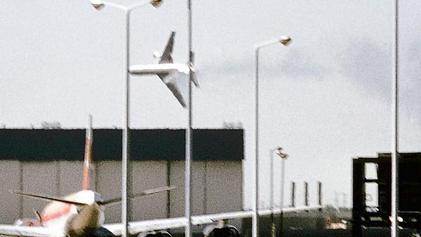| Hot Topics | |
|---|---|
Bounced a couple of times & burst into flames
43 posts
• Page 1 of 2 • 1, 2
Bounced a couple of times & burst into flames
FedEx plane crashes, explodes on landing in Tokyo
[YT]i-OQKdmwOv4[/YT]
[YT]i-OQKdmwOv4[/YT]
-

Taro Toporific - Posts: 10021532
- Images: 0
- Joined: Tue Sep 10, 2002 2:02 pm
Narita is quite famous for having heavy turbulence and sometimes cross winds. I know it's quite normal, but still to see something like this is really scary. I just wondered why it porpoised like that.
"Intelligence isn't the vessel of wisdom, wisdom is a vessel that puts intelligence to good use."
-

xenomorph42 - Maezumo
- Posts: 899
- Joined: Thu Jan 18, 2007 10:00 pm
- Location: Somewhere hopelessly lost in Japan!
does this mean i won't be getting my special delivery from canadianpharmaceuticals.com?
seriously though, that's some scary shit. i wonder how outdated their weather detection system really is.
cnn just confirmed pilot and co-pilot are dead.
seriously though, that's some scary shit. i wonder how outdated their weather detection system really is.
cnn just confirmed pilot and co-pilot are dead.
-

Cyka UchuuJin - Posts: 2007
- Joined: Wed Jul 11, 2007 7:39 pm
- Location: Here, there, and everywhere.
The first thing I thought of when I saw it was a Fed Ex plane that crashed was "Am I expecting anything in the mail?"... does that make me a bad person? Condolences to the families of the pilots though. Seriously, the work of your loved ones help to make living away from home that much more bearable. Thank you.... 
In the beginning the universe was created. This has made a lot of people very angry and been widely regarded as a bad move - Douglas Adams
-

Midwinter - Maezumo
- Posts: 649
- Joined: Thu Mar 10, 2005 10:06 pm
Midwinter wrote:The first thing I thought of when I saw it was a Fed Ex plane that crashed was "Am I expecting anything in the mail?"... does that make me a bad person? Condolences to the families of the pilots though. Seriously, the work of your loved ones help to make living away from home that much more bearable. Thank you....
God help me, me too. I'm expecting some crap from France, and was relieved to find out that the flight originated in China.
-catone
-used up so much karma that I don't even want to ask if Tom Hanks was on the plane
"If there's a river, we'll dam it, and if there's a tree, we'll ram it - 'cause we Japanese are talkin' progress!"
-

Catoneinutica - Posts: 1953
- Joined: Tue Jan 24, 2006 12:23 pm
Midwinter wrote:The first thing I thought of when I saw it was a Fed Ex plane that crashed was "Am I expecting anything in the mail?"... does that make me a bad person?
Yeah, same thoughts exactly.
Apparently since 1978, Narita had a good track record for death from accidental crash until this incident.
9/11 Terror Attack: Survived. 3/11 Earthquake: Survived.
-

IkemenTommy - Posts: 5425
- Joined: Sun Jul 24, 2005 3:29 am
-

Takechanpoo - Posts: 4294
- Images: 4
- Joined: Fri Oct 06, 2006 10:47 pm
- Location: Tama Prefecture(多摩県)
You do not have the required permissions to view the files attached to this post.
9/11 Terror Attack: Survived. 3/11 Earthquake: Survived.
-

IkemenTommy - Posts: 5425
- Joined: Sun Jul 24, 2005 3:29 am
Takechanpoo wrote:
I think Narita might need to get some bigger fire trucks.
And you run and you run to catch up with the sun but it's sinking
Racing around to come up behind you again
The sun is the same in a relative way, but you're older
Shorter of breath and one day closer to death
Racing around to come up behind you again
The sun is the same in a relative way, but you're older
Shorter of breath and one day closer to death
-

FG Lurker - Posts: 7854
- Joined: Mon Nov 29, 2004 6:16 pm
- Location: On the run
It was really windy out the Chiba way this morning. The Keiyo line was running a little off, I think.
This accident made me think of the movie Castaway. A former student of mine, and employee of Fed Ex, told me they were given free tickets to that movie.
This accident made me think of the movie Castaway. A former student of mine, and employee of Fed Ex, told me they were given free tickets to that movie.
His [Brendan Behan's] last words were to several nuns standing over his bed, "God bless you, may your sons all be bishops."
-

Behan - Maezumo
- Posts: 1824
- Joined: Tue Aug 22, 2006 4:15 pm
- Location: That Wonderful Place Known as Chiba
Takechanpoo wrote:
This picture is begging for one of those "inspirational" style pics.
Caption: FUTILITY
I will not abide ignorant intolerance just for the sake of getting along.
-

American Oyaji - Posts: 6540
- Images: 0
- Joined: Sun Oct 20, 2002 9:20 pm
- Location: The Evidence of Things Unseen
The way the aircraft porpoised may have to do with windshear.
Greatest danger: Takeoff and landing
Windshear poses the greatest danger to aircraft during takeoff and landing, when the plane is close to the ground and has little time or room to maneuver. During landing, the pilot has already reduced engine power and may not have time to increase speed enough to escape the downdraft. During takeoff, an aircraft is near stall speed and thus is very vulnerable to windshear.
[font="Arial Black"][SIZE="7"]B[/SIZE][/font][font="Palatino Linotype"][SIZE="6"]u[/SIZE][/font][font="Comic Sans MS"][SIZE="5"]c[/SIZE][/font][font="Impact"][SIZE="6"]k[/SIZE][/font]
-

Bucky - Maezumo
- Posts: 1806
- Joined: Sat Dec 30, 2006 3:20 am
- Location: Left Coast
Sounds like it might be a crappy airframe...
via The Chicago Tribune
The MD-11 has been involved in accidents in which it flipped while landing, and pilots have complained about the aircraft in the past. The plane is no longer used by carriers for passenger travel but is widely employed for moving cargo.
In 1999, an MD-11 flipped over and burst into flames, killing three people during a crash landing in a storm in Hong Kong. And in 1997 one of the planes landed hard, flipped and caught fire while landing in Newark, N.J.
Tomoki Kuwano, a former Japan Airlines pilot and aviation expert, said that although wind shear could not be ruled out, the MD-11 has a tendency to be unstable during landing.
"In the past, the MD-11 has a record of landing failure," he said. "And when that happens it often flips over."
via The Chicago Tribune
•I prefer liberty with danger to peace with slavery.•
-

Mike Oxlong - Posts: 6818
- Joined: Wed Oct 20, 2004 5:47 pm
- Location: 古き良き日本
Mike is on the money. Well-designed planes DO NOT crash from an inflight upset such as windshear. The MD-11 has big problems coping with inflight upsets due to the way it is designed (being a trijet with one engine hanging over the back, being longer than a DC-10 while at the same time having a smaller tailplane for economic reasons), and to top it all off the wing on the side that receives the brunt of the impact of an extremely hard landing on a DC-10 or MD-11 will usually completely separate from the rest of the airframe, with the asymmetric lift from the remaining wing flipping the aircraft on its back as it slides across the ground.
They fitted the MD-11 with a system called LSAS to help the pilots control this design failure with wings, but as you can see it didn't really help them flying into a gusty Narita. Rest in peace.
They fitted the MD-11 with a system called LSAS to help the pilots control this design failure with wings, but as you can see it didn't really help them flying into a gusty Narita. Rest in peace.
"Doing engineering calculations with the imperial system is like wiping your ass with acorns, it works, but it's painful and stupid."
"Plus, it's British."
- Nameless
"Plus, it's British."
- Nameless
-

Tsuru - Posts: 2408
- Joined: Tue Jan 14, 2003 9:08 am
- Location: Farcical Blingboddery
Tsuru wrote:Mike is on the money. Well-designed planes DO NOT crash from an inflight upset such as windshear. The MD-11 has big problems coping with inflight upsets due to the way it is designed (being a trijet with one engine hanging over the back, being longer than a DC-10 while at the same time having a smaller tailplane for economic reasons), and to top it all off the wing on the side that receives the brunt of the impact of an extremely hard landing on a DC-10 or MD-11 will usually completely separate from the rest of the airframe, with the asymmetric lift from the remaining wing flipping the aircraft on its back as it slides across the ground.
They fitted the MD-11 with a system called LSAS to help the pilots control this design failure with wings, but as you can see it didn't really help them flying into a gusty Narita. Rest in peace.
RIP.
As usual Tsuru, you're right on with your analysis. You can just see it partly in Take's upload of the news video, but in other news shots you could see it quite clearly. The larboard wing separated from the fuselage in one complete piece right at the fuselage the second the wingtip hit the ground and the lift from the starboard wing flipped the frame like a pancake. It got messy from there.....
"There are those that learn by reading. Then a few who learn by observation. The rest have to piss on an electric fence and find out for themselves!"- Will Rogers

-

Greji - Posts: 14357
- Joined: Fri Jun 25, 2004 3:00 pm
- Location: Yoshiwara
Mike Oxlong wrote:The plane is no longer used by carriers for passenger travel but is widely employed for moving cargo.
I believe Finnair, for one, still flies MD11s, at least they were as recently as last August when I saw one at Kansai.
Tsuru, as I understand, the problem you described is basically what caused AA 191 to crash.

- Mock Cockpit
- Maezumo
- Posts: 700
- Joined: Sun Mar 23, 2008 9:58 pm
Finnair and KLM still fly them with passengers, the latter is phasing them out in 2012. Lucky coincidence has me flying their MD-11 sim this friday, giving me a chance to see all of this for myself.Mock Cockpit wrote:I believe Finnair, for one, still flies MD11s, at least they were as recently as last August when I saw one at Kansai.
Tsuru, as I understand, the problem you described is basically what caused AA 191 to crash.
AA191 is an oddball crash with a different cause altogether, improper maintenance (using a forklift instead of the special cradle to replace engines) caused hairline fractures in the no.1 engine mount and during takeoff in Chicago one day, the no.1 engine tore itself loose from the wing at full power, taking some of the plumbing for the hydraulics with it which in turn caused the leading edge high-lift devices called slats to retract on one side. The now slatless left wing stalled immediately and the lift differential between the handicapped left wing and the fully fuctioning right wing combined with the loss of thrust on the left side of the plane flipped the plane upside down in a split second, sending it into a trailerpark at 400mph. The only other crash it can be compared to is the 747 cargo crash that happened in Amsterdam in 1992, which is the big one that motivated me as a kid to become what I am today
"Doing engineering calculations with the imperial system is like wiping your ass with acorns, it works, but it's painful and stupid."
"Plus, it's British."
- Nameless
"Plus, it's British."
- Nameless
-

Tsuru - Posts: 2408
- Joined: Tue Jan 14, 2003 9:08 am
- Location: Farcical Blingboddery
Although AA 111 was also a DC-10 and (edit...Tsuru beat me to the punch and as usual, does a much better job explaining it)
The Enrichment Center reminds you that the weighted companion cube will never threaten to stab you and, in fact, cannot speak.
-

Kuang_Grade - Maezumo
- Posts: 1364
- Joined: Sat Aug 14, 2004 2:19 pm
- Location: The United States of Whatever
The same flightnumber landing in similar conditions onto the other end of the same runway, as flown a month and a half ago:
[yt]gWZzxqQMoro[/yt]
[yt]gWZzxqQMoro[/yt]
"Doing engineering calculations with the imperial system is like wiping your ass with acorns, it works, but it's painful and stupid."
"Plus, it's British."
- Nameless
"Plus, it's British."
- Nameless
-

Tsuru - Posts: 2408
- Joined: Tue Jan 14, 2003 9:08 am
- Location: Farcical Blingboddery
Tsuru wrote:The same flightnumber landing in similar conditions onto the other end of the same runway, as flown a month and a half ago:
[yt]gWZzxqQMoro[/yt]
That looked scary and really close to accident.
His [Brendan Behan's] last words were to several nuns standing over his bed, "God bless you, may your sons all be bishops."
-

Behan - Maezumo
- Posts: 1824
- Joined: Tue Aug 22, 2006 4:15 pm
- Location: That Wonderful Place Known as Chiba
Behan wrote:That looked scary and really close to accident.
Narita Drifting.. ]This might've been posted somewhere before, but...[/I]
[YT]5X_7Xt2ga-s[/YT]
GJ
[SIZE="1"]Worthy Linkage: SomaFM Net Radio - Slate Explainer - MercyCorp Donations - FG Donations - TDV DailyMotion Vids - OnionTV[/SIZE]
-

GuyJean - Posts: 5720
- Joined: Sun Apr 14, 2002 2:44 pm
- Location: Taro's Old Butt Plug
GuyJean wrote:Narita Drifting.. ]This might've been posted somewhere before, but...[/I]
GJ
Thank you. I have had the crabs before and it ain't fun. Tsuru is just learning that for real now!
"There are those that learn by reading. Then a few who learn by observation. The rest have to piss on an electric fence and find out for themselves!"- Will Rogers

-

Greji - Posts: 14357
- Joined: Fri Jun 25, 2004 3:00 pm
- Location: Yoshiwara
Tsuru wrote:Finnair and KLM still fly them with passengers, the latter is phasing them out in 2012. Lucky coincidence has me flying their MD-11 sim this friday, giving me a chance to see all of this for myself.
AA191 is an oddball crash with a different cause altogether, improper maintenance (using a forklift instead of the special cradle to replace engines) caused hairline fractures in the no.1 engine mount and during takeoff in Chicago one day, the no.1 engine tore itself loose from the wing at full power, taking some of the plumbing for the hydraulics with it which in turn caused the leading edge high-lift devices called slats to retract on one side. The now slatless left wing stalled immediately and the lift differential between the handicapped left wing and the fully fuctioning right wing combined with the loss of thrust on the left side of the plane flipped the plane upside down in a split second, sending it into a trailerpark at 400mph. The only other crash it can be compared to is the 747 cargo crash that happened in Amsterdam in 1992, which is the big one that motivated me as a kid to become what I am today
I understood about the improper handling of the engine but not about the loss of hydraulic power. Makes sense. Again, as I understand it, the loss of an engine (functionally or actual physical separation) shouldn't necessarily cause a plane to crash. Would I be right in thinking that in today's planes the scenario you described above be almost impossible?
- Mock Cockpit
- Maezumo
- Posts: 700
- Joined: Sun Mar 23, 2008 9:58 pm
Mock Cockpit wrote:I understood about the improper handling of the engine but not about the loss of hydraulic power. Makes sense. Again, as I understand it, the loss of an engine (functionally or actual physical separation) shouldn't necessarily cause a plane to crash. Would I be right in thinking that in today's planes the scenario you described above be almost impossible?
Impossible is a big word, but with the advent of fan jet engines, you can lose a couple of engines and if you still have one good one, you have a good possibility of maintaining an airborne attitude and getting back on the ground safely even with some of the bigger birds. Even without engines your aerodynamics can keep control to bring it into a controlled landing of sorts, i.e. Sully's Hudson River splash down.
The biggest problems would probably be structural failures with wings and otherwise. You have a wing or stabilizer failures and you start getting control problems, especially if it is accompanied with other malfunctions. Loss of control at 3-400 knots can cause the pilot's pucker factor to start nipping washers out of the seat....
"There are those that learn by reading. Then a few who learn by observation. The rest have to piss on an electric fence and find out for themselves!"- Will Rogers

-

Greji - Posts: 14357
- Joined: Fri Jun 25, 2004 3:00 pm
- Location: Yoshiwara
Greji wrote:Impossible is a big word, but with the advent of fan jet engines, you can lose a couple of engines and if you still have one good one, you have a good possibility of maintaining an airborne attitude and getting back on the ground safely even with some of the bigger birds. Even without engines your aerodynamics can keep control to bring it into a controlled landing of sorts, i.e. Sully's Hudson River splash down.
The biggest problems would probably be structural failures with wings and otherwise. You have a wing or stabilizer failures and you start getting control problems, especially if it is accompanied with other malfunctions. Loss of control at 3-400 knots can cause the pilot's pucker factor to start nipping washers out of the seat....
I was thinking more of the advent of fly-by-wire and advanced computer controlled flight systems.
- Mock Cockpit
- Maezumo
- Posts: 700
- Joined: Sun Mar 23, 2008 9:58 pm
Mock Cockpit wrote:Would I be right in thinking that in today's planes the scenario you described above be almost impossible?
I would guess (and a guess it is) that if the hydraulic lines get ripped out of the wing then there isn't much that any control system can do.
And you run and you run to catch up with the sun but it's sinking
Racing around to come up behind you again
The sun is the same in a relative way, but you're older
Shorter of breath and one day closer to death
Racing around to come up behind you again
The sun is the same in a relative way, but you're older
Shorter of breath and one day closer to death
-

FG Lurker - Posts: 7854
- Joined: Mon Nov 29, 2004 6:16 pm
- Location: On the run
FG Lurker wrote:I would guess (and a guess it is) that if the hydraulic lines get ripped out of the wing then there isn't much that any control system can do.
Well a fly-by-wire aircraft doesn't have a hydraulic system as such.
A fly-by-wire system actually replaces manual control of the aircraft with an electronic interface. The movements of flight controls are converted to electronic signals, and flight control computers determine how to move the actuators at each control surface to provide the expected response. The actuators are usually hydraulic, but electric actuators have been used.
http://en.wikipedia.org/wiki/Aircraft_flight_control_systems#Fly-by-wire_control_systems
Tsuru seems like a full bottle on this stuff so I'm sure he'd be able to set us straight.
- Mock Cockpit
- Maezumo
- Posts: 700
- Joined: Sun Mar 23, 2008 9:58 pm
43 posts
• Page 1 of 2 • 1, 2
Who is online
Users browsing this forum: No registered users and 15 guests


